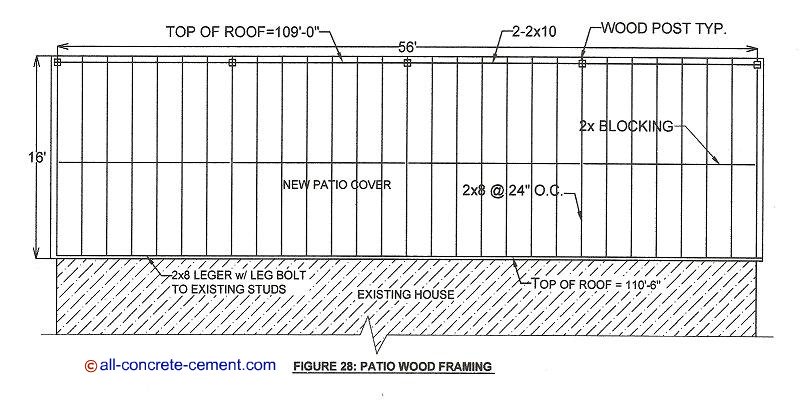|
[?]Subscribe To This Site
|
Wooden Patio Cover DesignsOne of the easiest wooden patio cover designs is shown in figure 28 below. This particular wood patio cover design uses the existing house walls to support the roof rafters for the new wooden patio cover. The existing structure will provide the support for half of the new patio cover which is a big advantage because it will eliminate the need for new footings and posts.The disadvantages to this approach it will require evaluation of the existing studs to check whether they are strong enough for the added weight. On top of that, the existing wall finishes had to be removed to allow the new ledgers to directly tied in to the existing studs. This will require the exterior walls finishes to be redone after the new work is completed.
While planning how to build a patio cover the pros and cons mentioned above need to be worked out and to be included in budgeting/estimating process. If you are planning to hire a contractor bringing all these issues upfront for discussion will minimize “hidden” cost and disputes that may arise later. Figure 28 is one of many different patio cover ideas that can be built with wood which is perfect for diy patio cover. The top of roof elevations noted assumes the top of slab patio below is 100’-0”. Even though this design can be built to any height, it cannot be higher than the existing house/structure for obvious reason. The height between low and high points of the roof can be determined by the type of roofing to be used.Missing from figure 28, are the 7/16” wafer board or ½” plywood for roof sheathing on top of 2x8 roof rafters shown. These roof sheathing will support the roofing whether they will be roof shingles, torch down, or roof tiles. Prefer to use structural steel and metal roof deck instead?... click here to see how figure 28 is translated into steel c channel framing with hollow structural sections tube columns. Back to wooden patio cover designs |
|






